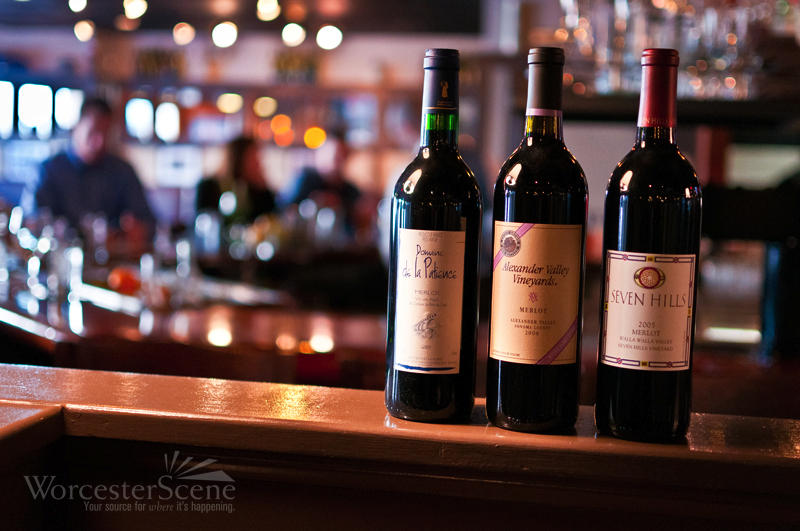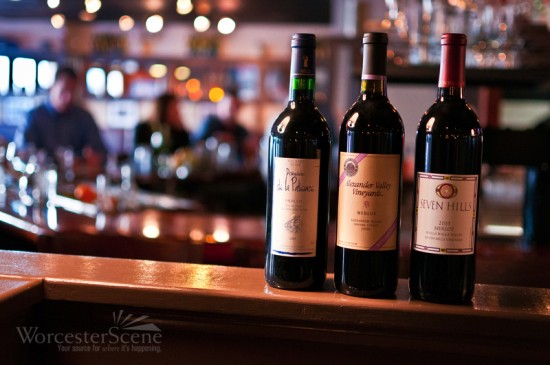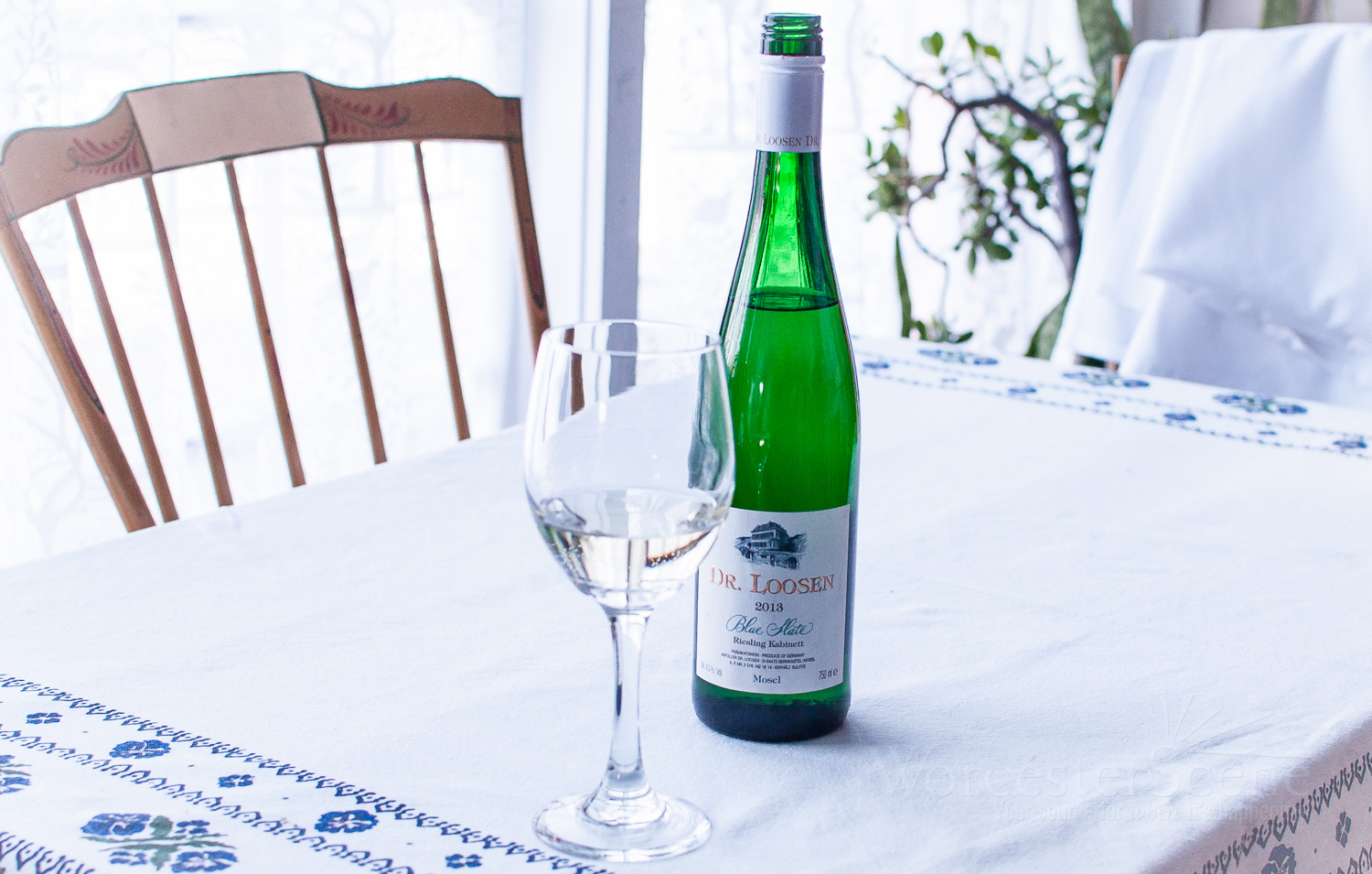
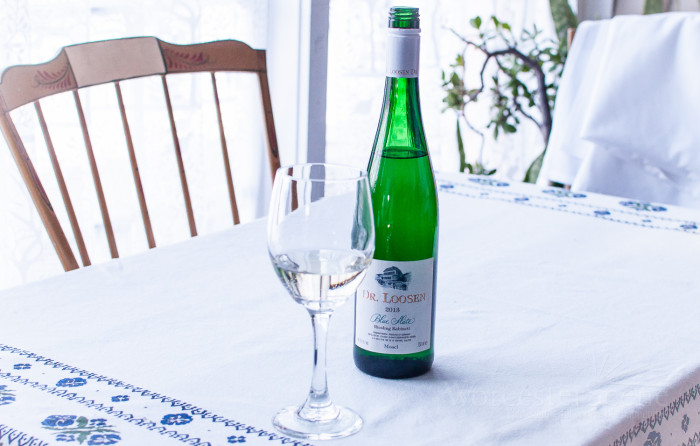
After being cooped up inside during this unrelenting winter many of us are eager to spend as much time as we can outdoors this summer. The balmy summer nights call for al fresco wining and dining. Perhaps our New England palates are preprogrammed to look for lighter meals and lighter wines in the summer months? Riesling with all of its many styles fits the bill beautifully for its light body, pure tropical refreshment, and versatility with season dishes. However, it is one of the most misunderstood varieties because of its range of wine styles. Rieslings around the world can be bone dry to richly sweet, a simple quaff to elegantly complex. It is important to know what to look for and where.
Riesling is one of the “noblest” white grape varieties. No matter where it is grown or how it is vinified it maintains its signature light body, stone fruit aroma, and high acid. Riesling is grown around the world but it is not well suited for every climate. Its native home and arguably at its best Germany where a long, slow, overall cool ripening period results in complex aromas and high levels of sugar. So why aren’t you drinking more of it? German and Austrian labels are intimidating (see tasting note below). To add to the confusion, their labels have what are called “pradikat” (quality) levels on the “wines of quality.” The level of quality is based on the amount of sugar the grape juice was able to achieve in a given year. At the lowest levels of ripeness, Kabinett and Spätlese, the winemaker can decide to turn all of the sugar into alcohol or leave some residual sugar to balance out high acid or bitterness, leaving the wine dry or off dry. Auslese, Beerenauslese, and Trockenbeerenauslese, are highest in sugar content but are balanced by high acid. Any easy way to remember the quality levels from lowest to high is the mnemonic KSABET. (The E is for Eiswein/Icewine) Keep in mind that this system only considers prefermentation sugar levels, which is only one component of true quality. Can a Kabinett taste better than a Spätlese? Yes! Confusing, I know, but there is hope! In an effort to make these wonderful wines more marketable globally, many producers bypass the pradikat level system in an attempt clean up the clutter on their labels. If the wine does not have a level indicated it does not mean that it is poor quality. When all else fails the back label on these wines can give you an indication of what the wine will taste like. Many times the back label will give you a sweetness rating from low to high. If it says “trocken” it is dry! There will also be an importer listed. Rudi Weist, Moseler, and Terry Theise are solid importers with a palate proven track record.
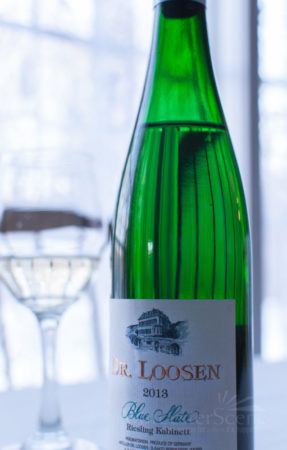 If you don’t want to have to study your wine bible before picking out your next bottle of Riesling you can look to the New World and you don’t have to look very far. The Finger Lakes in New York have several notable producers making well balanced, dry Rieslings. However, our Worcester market has been slow to warm to them and as a result Finger Lakes Riesling is scarce. Be sure to ask your retailer! Washington State Riesling has very good representation on our local shelves and wine lists, as does cool climate New Zealand and Australia. However, even with these easy to read front labels it is difficult to know what you are going to get in the glass. In addition to reading the back label, give the alcohol a look. A good rule of thumb with Riesling is the lower the ABV percentage the higher the sugar. Most Rieslings are not sweet but rather “off dry” in order to bring balance to a wine that is naturally high in acid.
If you don’t want to have to study your wine bible before picking out your next bottle of Riesling you can look to the New World and you don’t have to look very far. The Finger Lakes in New York have several notable producers making well balanced, dry Rieslings. However, our Worcester market has been slow to warm to them and as a result Finger Lakes Riesling is scarce. Be sure to ask your retailer! Washington State Riesling has very good representation on our local shelves and wine lists, as does cool climate New Zealand and Australia. However, even with these easy to read front labels it is difficult to know what you are going to get in the glass. In addition to reading the back label, give the alcohol a look. A good rule of thumb with Riesling is the lower the ABV percentage the higher the sugar. Most Rieslings are not sweet but rather “off dry” in order to bring balance to a wine that is naturally high in acid.
Riesling is a versatile wine for food pairing. Light bodied enough to be served as an aperitif, and has the depth and complexity of flavor to work into the main courses particularly during spring and summer fare; hard or soft cheese, Greens, fruit salsa, grilled fish and chicken with citrus sauces, also a surprisingly fire extinguisher for spicy barbecue rubs. Save your full bodied, high alcohol, buttery, oaky Chardonnay for the crisp first nights of autumn. Refresh yourself with a glass of Riesling. Even at its simplest, it offers light refreshment and flavor without a big hit the palate or the wallet.
All three are screw caps! Hurrah!
2009 Studert-Prüm (producer), Wehlener Sonnenuhr (vineyard), Riesling (variety) Kabinett (pradikat), Mosel (region), Germany (country ;-)) 9.0% ABV $15
Pale straw with green hue. Intense, complex aromatics exhibit tangerine, lemon, apricot, honeysuckle, subtle graphite, white pepper, and ginger. Excellent balance, light weight, off dry, juicy acidity is slow to emerge through the fruit extract. Long finish is dominated by lemon, citrus, and stone fruit.
2007 St. Ludwin, Bernkastler Kurfürstlay, Riesling Auslese, Mosel, 8% ABV $20
Brilliant, pale, 10 karat gold with a slight green tinge and copper highlights. Intensely aromatic tropical fruit, papaya, mango, peach, honey, coconut, and caramel. Medium body, off dry, medium plus, refreshing, acid struggles to emerge through medium viscosity. Concentrated, complex, elegant, finish lingers for an eternity on the palate and reproducing the aromas found in the nose.
2011 Twelfth Night Riesling, Central Otago, New Zealand, 12.8% ABV $17
Shiny, pale straw yellow with green hue. Intense aromatics are citrus driven, lemon, lime, fresh pine, and meringue, with a hint of chalk, smoke, celery seed. Dry, light body, tangy bright acidity, alcohol throws no heat but a small prickle on the palate coupled with a touch of astringency. Well balanced. Bright citrus flavors explode on the medium finish. Pure refreshment.

